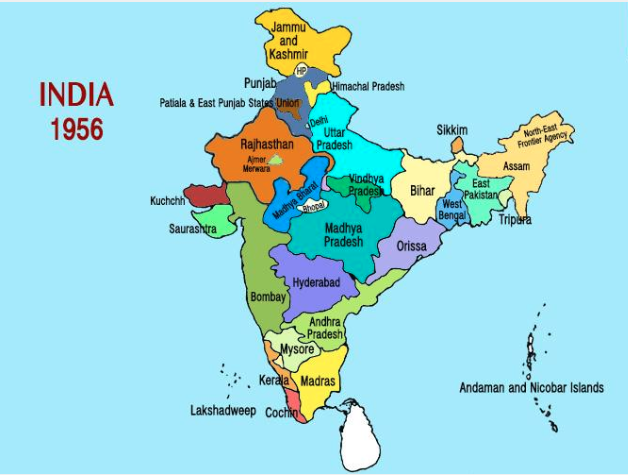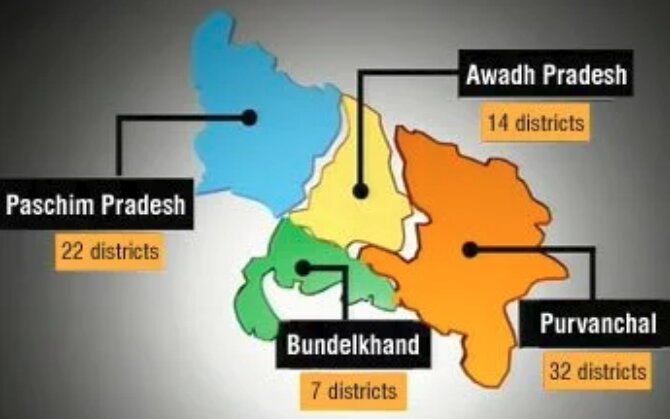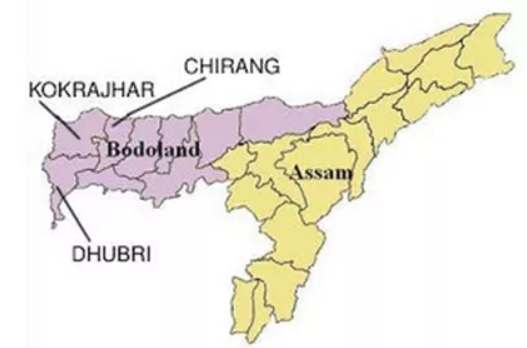
Statehood Demand | 31 May 2019
Introduction
- Modern states are large and complex with several cultural and economic problems and historical experiences add complexity to their problems.
- Since independence Indian state has to deal with the demands of separate statehood largely based on language, culture, ethnicity, religion etc.
- Later the basis for separate statehood demands were largely shifted to better governance and greater participation, administrative convenience, economic viability in the developmental needs of sub regions.
- The very beginning of 21st century in India also witnessed the creation of three new states- Chhattisgarh, Uttarakhand and Jharkhand and more recently Telangana got the separate statehood.
- As democracy takes firm roots such aspirations also grow. The hitherto neglected sections of the populations realise their own importance, demand new provinces or states want new borders and secure autonomy.
History
- In the 1950’s there was urging demand in the people, especially in the Telugu speaking population, for reorganisation of states on lingual lines. Potti Sreeramulu started indefinite fast for supporting his cause of states reorganisation.
- His death on 56th day of fast resulted in widespread violence and the government was forced to constitute a State Reorganisation Commission. In 1953, the first state of Andhra Pradesh was created on basis of language.
- On the basis of the recommendations of State Reorganisation Commission in 1956, 14 states and 6 UTs were created.

- The chronology of states' bifurcation in India after 1956:
- 1960 - Bombay state split into Maharashtra and Gujarat
- 1963 - Nagaland carved out of Assam
- 1966 - Haryana and Himachal Pradesh carved out of Punjab state
- 1972 - Meghalaya , Manipur and Tripura were formed
- 1975 - Sikkim became part of Indian union
- 1987 - Goa and Arunachal Pradesh became states (earlier these were UTs)
- 2000 - Uttaranchal (out of UP), Jharkhand (out of Bihar) and Chhattisgarh (out of Madhya Pradesh) were formed
- Telangana (out of Andhra Pradesh), when it was eventually created in 2014, became India's 29th state.
Various Statehood Demands in India
- Vidarbha: It comprises the Amravati and Nagpur divisions of eastern Maharashtra.
- The State Reorganisation Act of 1956 recommended the creation of Vidarbha state with Nagpur as the capital, but instead it was included in Maharashtra state, which was formed on May 1, 1960.
- Backwardness of region due to the neglect of successive state governments, is justified as the basis for demand of separate state of Vidarbha.
- Delhi: 69th Constitutional Amendment Act, 1991, inserted Article 239AA in Indian constitution which grants Special Status to Delhi among Union Territories (UTs).
- The amendment does not provide Delhi with the recognition of a full fledged state as Public Order, Police & Land in NCT of Delhi fall within the domain and control of Central Government.
- To gain the control of such substantive powers, Delhi government is aspiring for full statehood.
- The question of the division of Uttar Pradesh into four states was a major poll issue during the build up to the 2012 UP Assembly Elections.
- In 2011, then UP Chief Minister and Bahujan Samaj Party (BSP) chief, Mayawati, passed a resolution in the Assembly to split UP into four smaller states – Purvanchal, Bundelkhand, Awadh Pradesh and Paschim Pradesh – in the interest of providing better administration. The resolution later got stuck with the Congress government at the centre.
- Historically, the state comprised provinces that were collectively called ‘The United Provinces of Agra and Oudh’. This was shortened by the Government of India Act 1935 to United Provinces and was later renamed Uttar Pradesh (as the term ‘province’ didn’t fit in with the idea of Republic).
- In 1955, Ambedkar proposed the idea of splitting UP into three states – through his book, ‘Thoughts On Linguistic States’.
- He suggested the creation of three states, with Meerut as the capital of the Western Region, Allahabad as the capital of the Eastern Region and Kanpur as the capital of the Central region. This is what the BSP had in mind while proposing the split in 2011.
- Harit Pradesh: It consists agriculturally dominated districts of Western Uttar Pradesh.
- Purvanchal: It is a geographic region of north-central India, which comprises the eastern end of Uttar Pradesh state. It is bounded by Nepal to the north, Bihar state to the east, Bagelkhand region of Madhya Pradesh state to the south, the Awadh region of Uttar Pradesh to the west. Purvanchal comprises three divisions – Awadhi region in the west, Bhojpuri region in the east and the Baghelkhand region in the south.

- Bodoland: The Bodos are the largest ethnic and linguistic community in northern Assam. The agitation for the creation of a separate Bodoland state resulted in an agreement in 2003 between the GoI, the Assam state government and the Bodo Liberation Tigers Force. According to the agreement, Bodos were granted the Bodoland Territorial Council (BTC), within the State of Assam under Sixth Schedule.

- Saurashtra: The movement for separate Saurashtra state was initiated in 1972 by Ratilal Tanna. Lack of better water supply to the region, lack of job opportunities and subsequent youth migration have been cited as major reasons for the demand of statehood. Saurashtra is also linguistically different from the rest of the state.
- Gorkhaland is a proposed state covering areas inhabited by the ethnic Gorkha (Nepali) people, namely Darjeeling hills and Dooars in the northern part of West Bengal.
Constitutional Provisions
- Indian constitution empowers the Union government to create new states out of existing states or two merge one state with other. This process is called reorganisation of the states.
- The basis of reorganisation could be linguistic, religious, ethnic or administrative.
- Article 3 provides the following procedure:
- Presidential reference is sent to State Assembly.
- After presidential reference, a resolution is tabled and passed in Assembly.
- Assembly has to pass a Bill creating the new State/States.
- A separate Bill has to be ratified by Parliament.
Reasons for Demand
- All these demands are from regions which are poor in spite of being rich in natural resources and disputes exist over sharing and utilisation of natural resources with the mother states.
- Linguistic and cultural reasons, which were the primary basis for creating new states in the country, have now become secondary in most of these cases.
- Other factors being:
- Competition for local resources.
- Government negligence towards certain regions
- Improper allocation of the resources,
- Difference in culture, language, religion, etc.
- The economy's failure to create enough employment opportunities
- Popular mobilization and the democratic political process is also one of the reasons.
- ‘The sons of the soil' sentiments
Issues Arising due to creation of New States
- Different statehood may lead to the hegemony of the dominant community/ caste/ tribe over their power structures.
- This can lead to emergence of intra-regional rivalries among the sub-regions.
- The creation of new states may also lead to certain negative political consequences like a small group of legislators could make or break a government at will.
- There is also possibility of increase in the inter-State water, power and boundary disputes.
- The division of states would require huge funds for building new capitals and maintaining a large number of Governors, Chief Ministers, Ministers and administrators as the case in division of Andhra Pradesh and Telangana (establishment of new capital at Amravati).
- Creation of smaller states only transfers power from the old state capital to new state capital without empowering already existing institutions like Gram Panchayat, District Collector, etc. rather diffusion of development in the backward areas of the states.
Way Forward
- Economic and social viability rather than political considerations must be given primacy.
- Parent states that lose out in terms of physical and human capital may be adequately compensated.
- There should be certain clear-cut parameters and safeguards to check the unfettered demands.
- It is better to allow democratic concerns like development, decentralisation and governance rather than religion, caste, language or dialect to be the valid bases for conceding the demands for a new state.
- Apart from this the fundamental problems of development and governance deficit such as concentration of power, corruption, administrative inefficiency etc must be addressed.



